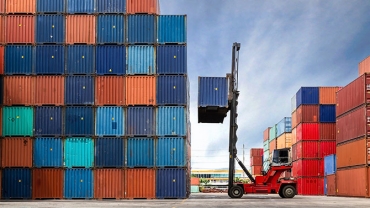
Tariff classification amid changes in global trade dynamics
29/11/24
Tariff classification has always been essential in the International Trade landscape, being the basis for determining the customs duties. However, with recent developments in the geopolitical and supply chain sustainability regulatory landscape, the importance of proper tariff classification, and in broader sense – having insights in your supply chain and goods - is once again highlighted. Examples of recent developments are the additional tariffs proposed by President-elect Trump, the Carbon Border Adjustment Mechanism (CBAM) and the, EU Anti-Deforestation Regulation (EUDR). Tariff classification is often the starting point to properly navigate through this evolving landscape.

What does this mean for your business?
Given the developments in the international trade landscape, businesses should proactively take action and plan, to avoid last minute revelations:
Review tariff classification: Having a correct tariff classification of products will help with determining the impact of geopolitical and sustainability-related regulations. Unfortunately, we often see that companies struggle with correctly classifying their products.
Supply chain reassessment: Having a comprehensive insight into the current supply chains, assess supply chain resiliency, determine potential impact and consequences of the various measures and identify potential mitigation strategies, or actions to undertake will help ensure continuance compliance. It is important that if supply chain reassessments are performed, the recent Harley-Davidson ECJ case is considered. Please find more details on this here.
Alignment among tax, logistics, customs, finance, procurement and sales functions is critical to avoid missing critical developments which can result in unanticipated costs or inefficiencies. The conflicting priorities of customs, tax or business can create complexity for managing the various measures and should therefore be carefully aligned.
Background
International Trade landscape
It will not have gone unnoticed, that President-elect Trump has proposed substantial additional tariffs, including a general 10% to 20% tariff on all imports, with a potential 60+% tariff specifically targeting Chinese origin imports. Additionally, Trump has proposed significant tariffs of 100% to 200% on vehicles manufactured in Mexico, and as his campaign concluded he proposed a broad 25% tariff on all Mexico-origin goods coming into the United States. It remains to be seen how countries will react if these tariffs will be effectuated, but countermeasures are expected. In addition, other geopolitical-driven regulations, like the dispute on electrical vehicles from China or sanctions imposed on Russia in light of the Russian-Ukraine war, have the objective to protect internal markets or restrict and balance a certain industry, by increasing the amount of policy measures.
Next to the geopolitical developments, companies must also consider the supply chain sustainability regulations that are being introduced rapidly, like CBAM and EUDR. In a nutshell, these regulations require companies to have insights into data of the entire supply chain of products. More information on EUDR and CBAM can be found on our website.
Tariff classification
When looking at all these developments, the classification of goods plays a crucial role in determining the (potential increase in) customs burden and the applicability of these various measures (like CBAM and EUDR) and should therefore not be underestimated. Proper classification of goods is the starting point for determining if, and to which extent, businesses are impacted by (new) measures.
We see that even though companies do their best, the classification of their products is often lacking. This since it is a profession in itself to classify, requiring both knowledge of the products to be classified as well as experience in applying the classification rules. Companies may also not have an experienced customs/trade specialist that can perform the classification, but have teams like logistics, procurement or research & development perform this task on the side. These teams in general rely on information available regarding the classification of similar products or on information gathered from suppliers without validation. This forms a risk and could result in an incorrect classification, and therefore an incorrect determination of the applicability of certain measures.
How can PwC help?
PwC can assist with a review of the tariff classification, including the review or potential improvements of the relevant processes and procedures. Where possible, we can explore the use of automation or AI-tooling in this process.
In addition, with our experience in guiding clients with their supply chain assessments, we can help assess the impact of the geopolitical and sustainability-related regulations on your business. And support with how to prepare or mitigate risks as much as possible and ensure that potential strategies or actions to undertake are identified and aligned within the business, ensuring that not only tax or customs perspectives are considered.
Contact us



















